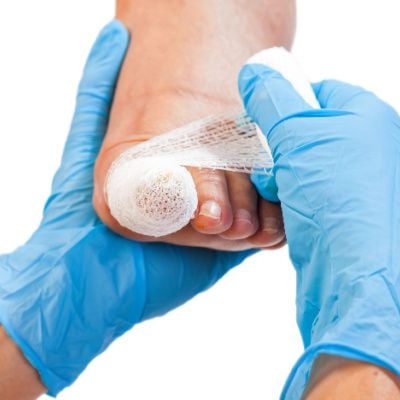 When addressing foot issues, toe surgery is a crucial and effective intervention for various conditions. This article provides a detailed exploration of toe surgery, shedding light on the diverse reasons individuals may seek such procedures, the types of surgeries available, the recovery process, and the potential benefits and risks associated with these interventions.
When addressing foot issues, toe surgery is a crucial and effective intervention for various conditions. This article provides a detailed exploration of toe surgery, shedding light on the diverse reasons individuals may seek such procedures, the types of surgeries available, the recovery process, and the potential benefits and risks associated with these interventions.
Understanding the Need for Toe Surgery
Toe surgery becomes a consideration for individuals facing a spectrum of foot-related challenges. These challenges may include but are not limited to:
-
Bunions: Painful bony protrusions at the base of the big toe.
-
Hammertoes: Abnormal bending or curling of the toes, often causing discomfort.
-
Ingrown Toenails: Nails that grow into the surrounding skin, leading to pain and inflammation.
-
Neuromas: Thickening of nerve tissue between the toes, causing pain and discomfort.
-
Toe Deformities: Various congenital or acquired deformities affecting toe structure and function.
Types of Toe Surgeries
Toe surgery encompasses a range of procedures tailored to address specific issues. Some common types of toe surgeries include:
-
Bunionectomy: A surgical procedure to remove bunions and realign the big toe joint.
-
Hammertoe Correction: Surgery to straighten and realign toes affected by hammertoe deformity.
-
Ingrown Toenail Surgery: Remove a portion of the ingrown toenail to prevent recurrence.
-
Neuroma Excision: Removal of the thickened nerve tissue causing neuroma-related pain.
-
Toe Joint Fusion: Fusion of toe joints to address arthritis or deformities.
The Surgical Process: What to Expect
The journey of the surgery typically involves several key phases:
-
Preoperative Evaluation: A thorough podiatrist or orthopedic surgeon examination to assess the specific toe issue and determine the most suitable surgical approach.
-
Surgery Day: Toe surgery is often performed as an outpatient procedure, allowing patients to return home on the same day. General or local anesthesia is administered, depending on the complexity of the surgery.
-
Recovery Room: After surgery, patients are monitored in a recovery area to ensure a smooth transition from anesthesia.
-
Postoperative Care: Patients receive detailed instructions for at-home care, including pain management, wound care, and restrictions on activities that may impact healing.
Recovery and Rehabilitation
The postoperative period plays a pivotal role in the success of toe surgery. Patients can expect:
-
Limited Weight-Bearing: Depending on the type of surgery, patients may need to avoid putting weight on the operated foot for a specified period.
-
Physical Therapy: Rehabilitation exercises may be prescribed to enhance toe strength, flexibility, and overall function.
-
Follow-up Appointments: Regular check-ups with the surgeon to monitor healing progress and address concerns.
Benefits and Considerations
Toe surgery offers numerous benefits, including pain relief, improved toe alignment, and enhanced overall foot function. However, it's essential to consider potential risks and complications, such as infection, scarring, or, in rare cases, nerve damage. Open communication with the surgeon and adherence to postoperative guidelines are crucial for a successful outcome.
Conclusion
In conclusion, toe surgery is a transformative option for individuals grappling with various toe-related issues. From addressing painful bunions to correcting hammertoe deformities, these surgical interventions empower individuals to reclaim comfort and mobility in their daily lives. As with any medical procedure, informed decision-making, thorough preoperative discussions, and diligent postoperative care are pillars of a successful toe surgery journey. By unraveling the intricacies of toe surgery, this article aims to empower individuals with the knowledge to make informed choices for their toe health and overall well-being.
Disclaimer:
The information on this website is provided for educational and information purposes only and is not medical advice. Always consult with a licensed medical provider and follow their recommendations regardless of what you read on this website. If you think you are having a medical emergency, dial 911 or go to the nearest emergency room. Links to other third-party websites are provided for your convenience only. If you decide to access any of the third-party websites, you do so entirely at your own risk and subject to the terms of use for those websites. Neither Evanston Foot and Ankle Clinic, nor any contributor to this website, makes any representation, express or implied, regarding the information provided on this website or any information you may access on a third-party website using a link. Use of this website does not establish a doctor-patient relationship. If you would like to request an appointment with a health care provider, please call our office at (847) 864-5010.

